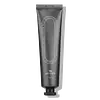What's inside
What's inside
 Key Ingredients
Key Ingredients

 Benefits
Benefits

 Concerns
Concerns

 Ingredients Side-by-side
Ingredients Side-by-side

Hydrolyzed Collagen 70%
EmollientPrunus Amygdalus Dulcis Oil
Skin ConditioningDipropylene Glycol
HumectantPolyvinyl Alcohol
1,2-Hexanediol
Skin ConditioningHydrolyzed Elastin
EmollientAlgin
MaskingSodium Polystyrene Sulfonate
Emulsion StabilisingHydrolyzed Royal Jelly Protein
Skin ConditioningHydrolyzed Honey Protein
Skin ConditioningMilk Protein Extract
Propolis Extract
Skin ConditioningLauryl Glucoside
CleansingPolyglyceryl-6 Laurate
EmulsifyingPectin
Emulsion StabilisingSucrose
HumectantMyristyl Glucoside
CleansingCellulose Gum
Emulsion StabilisingHydroxyethylcellulose
Emulsion StabilisingLactobacillus Extracellular Vesicles
Menadione
MaskingSodium Phosphate
BufferingDisodium Phosphate
BufferingCaprylyl Glycol
EmollientEthylhexylglycerin
Skin ConditioningAdenosine
Skin ConditioningParfum
MaskingHydrolyzed Collagen 70%, Prunus Amygdalus Dulcis Oil, Dipropylene Glycol, Polyvinyl Alcohol, 1,2-Hexanediol, Hydrolyzed Elastin, Algin, Sodium Polystyrene Sulfonate, Hydrolyzed Royal Jelly Protein, Hydrolyzed Honey Protein, Milk Protein Extract, Propolis Extract, Lauryl Glucoside, Polyglyceryl-6 Laurate, Pectin, Sucrose, Myristyl Glucoside, Cellulose Gum, Hydroxyethylcellulose, Lactobacillus Extracellular Vesicles, Menadione, Sodium Phosphate, Disodium Phosphate, Caprylyl Glycol, Ethylhexylglycerin, Adenosine, Parfum
Water
Skin ConditioningCellulose
AbsorbentDipropylene Glycol
HumectantAlcohol
AntimicrobialButylene Glycol
HumectantGlycerin
HumectantBetaine
HumectantSaccharomyces/Barley Seed Ferment Filtrate
HumectantPEG-60 Hydrogenated Castor Oil
EmulsifyingPhenoxyethanol
PreservativePolyacrylic Acid
Emulsion StabilisingPotassium Hydroxide
BufferingParfum
MaskingEthylhexylglycerin
Skin ConditioningPropanediol
SolventDisodium EDTA
Salicylic Acid
MaskingGlycolic Acid
BufferingHordeum Vulgare Seed Extract
Skin ConditioningOryza Sativa Extract
AbsorbentTocopherol
AntioxidantWater, Cellulose, Dipropylene Glycol, Alcohol, Butylene Glycol, Glycerin, Betaine, Saccharomyces/Barley Seed Ferment Filtrate, PEG-60 Hydrogenated Castor Oil, Phenoxyethanol, Polyacrylic Acid, Potassium Hydroxide, Parfum, Ethylhexylglycerin, Propanediol, Disodium EDTA, Salicylic Acid, Glycolic Acid, Hordeum Vulgare Seed Extract, Oryza Sativa Extract, Tocopherol
Alternatives
Ingredients Explained
These ingredients are found in both products.
Ingredients higher up in an ingredient list are typically present in a larger amount.
Dipropylene Glycol is a synthetically created humectant, stabilizer, and solvent.
This ingredient helps:
Dipropylene glycol is technically an alcohol, but it belongs to the glycol family (often considered part of the ‘good’ alcohols). This means it is hydrating and gentle on skin unlike drying solvent alcohols like denatured alcohol.
As a masking agent, Dipropylene Glycol can be used to cover the smell of other ingredients. However, it does not have a scent.
Studies show Dipropylene Glycol is considered safe to use in skincare.
Learn more about Dipropylene GlycolEthylhexylglycerin (we can't pronounce this either) is commonly used as a preservative and skin softener. It is derived from glyceryl.
You might see Ethylhexylglycerin often paired with other preservatives such as phenoxyethanol. Ethylhexylglycerin has been found to increase the effectiveness of these other preservatives.
Parfum is a catch-all term for an ingredient or more that is used to give a scent to products.
Also called "fragrance", this ingredient can be a blend of hundreds of chemicals or plant oils. This means every product with "fragrance" or "parfum" in the ingredients list is a different mixture.
For instance, Habanolide is a proprietary trade name for a specific aroma chemical. When used as a fragrance ingredient in cosmetics, most aroma chemicals fall under the broad labeling category of “FRAGRANCE” or “PARFUM” according to EU and US regulations.
The term 'parfum' or 'fragrance' is not regulated in many countries. In many cases, it is up to the brand to define this term.
For instance, many brands choose to label themselves as "fragrance-free" because they are not using synthetic fragrances. However, their products may still contain ingredients such as essential oils that are considered a fragrance by INCI standards.
One example is Calendula flower extract. Calendula is an essential oil that still imparts a scent or 'fragrance'.
Depending on the blend, the ingredients in the mixture can cause allergies and sensitivities on the skin. Some ingredients that are known EU allergens include linalool and citronellol.
Parfum can also be used to mask or cover an unpleasant scent.
The bottom line is: not all fragrances/parfum/ingredients are created equally. If you are worried about fragrances, we recommend taking a closer look at an ingredient. And of course, we always recommend speaking with a professional.
Learn more about Parfum